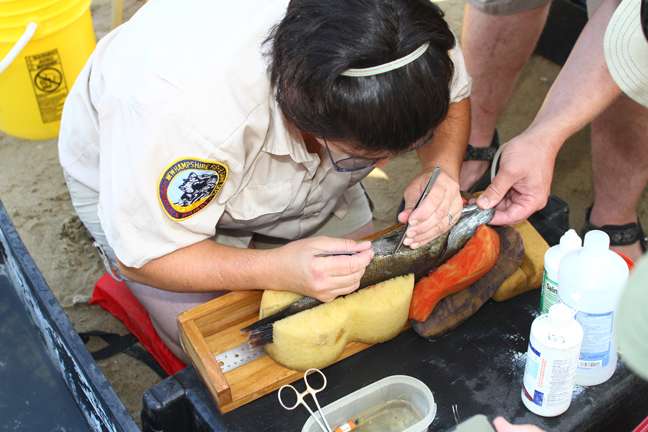
HOLDERNESS, N.H. — Fisheries biologists soon will have a better understanding of bass movements in Big Squam and Little Squam Lakes, thanks to assistance and funding provided by the New Hampshire B.A.S.S. Nation (NHBN).
“The main focus of this project is to determine if and when bass caught in Big Squam return after being released in Little Squam,” said John Foster, NHBN president. “Based on this data, we hope to increase evidence-based decision-making when it comes to fisheries management.”
During the NHBN Open in August, New Hampshire Fish and Game staff implanted radio tags in 10 largemouth and 23 smallmouth bass at the weigh-in site on Little Squam. Most of the tags, antenna and receiver were purchased with grant money provided by the B.A.S.S. Conservation Fund. Clubs donated funds to buy 14 additional tags.
NHBN approached Game and Fish with the idea of a tagging study because regulations required returning fish to the same body of water in which they were caught. Even though Big Squam is New Hampshire’s second largest lake, it doesn’t offer weigh-in facilities. Consequently, bass must be weighed in at Little Squam, before being loaded into livewells, transported through a 200-yard channel for a second time, and released into Big Squam. During one August tournament, delayed mortality was nearly 40 percent, with this requirement almost certainly a contributing factor.
This study will help biologists discover if bass caught in Big Squam return there or stay in Little Squam, and, if they do stay, how they impact the fishery there in terms of forage and habitat. If migration does occur, they’ll also learn how long it takes.
Within two days, 10 of the bass were still located in the general release area, but they had started to move away from the specific release site. Within a month, 18 had moved into the channel, and within two months, 21 of them had moved into the channel and 19 that had made it all the way to Big Squam Lake.
You can track the bass’ movements here.

